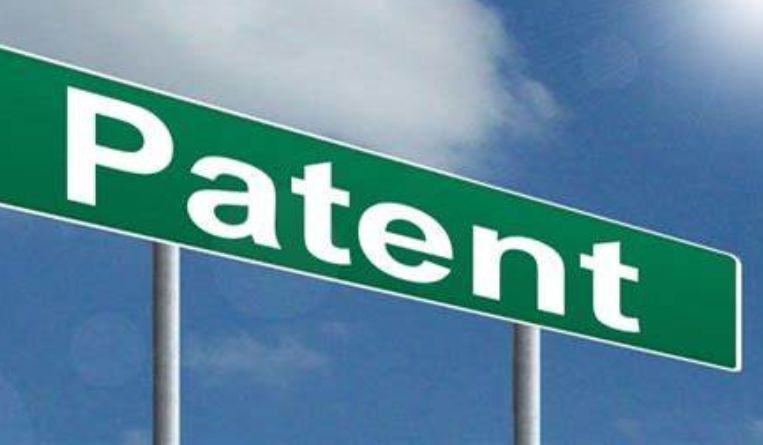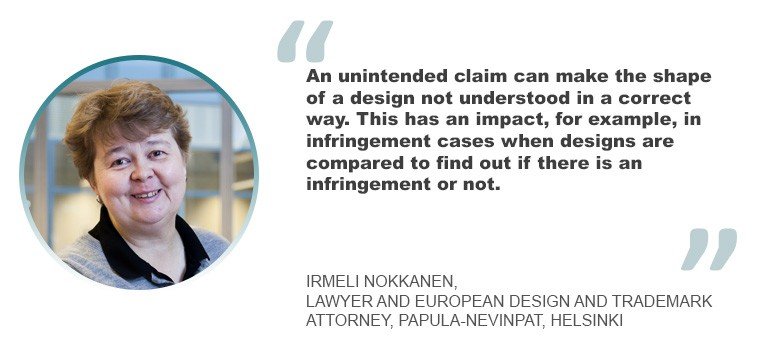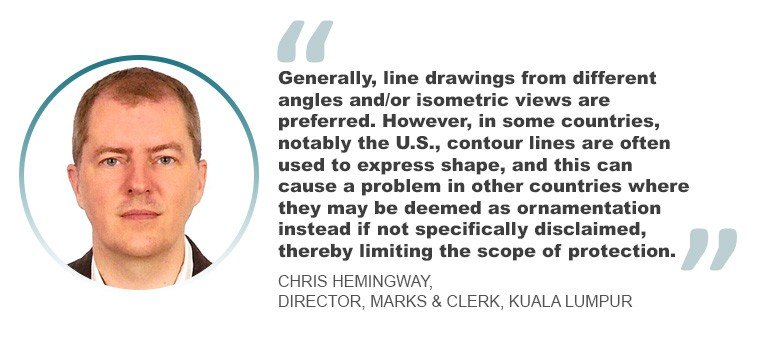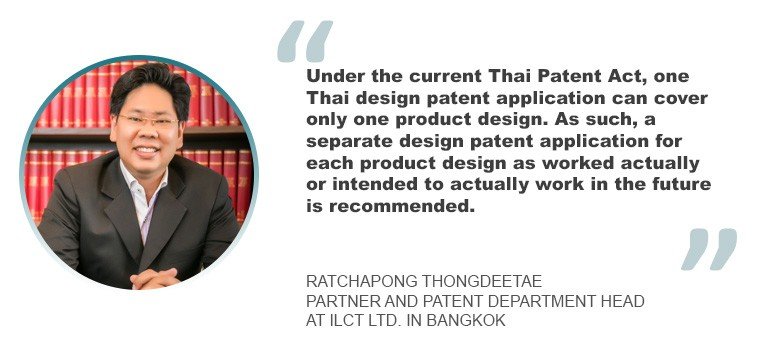Zhejiang Jianlong Sanitary Ware Co., Ltd. v. Grohe AG [2015 Civil Review No. 23], a landmark case in China, illustrates how an unintended claim may affect enforcement of a design patent. One of the key issues involved was how the shower head handle’s push button, an unintended claim of the patent, impacted the determination of infringement.
German sanitary fittings manufacturer Grohe is the patent holder of the design patent “handheld shower head No. A4284410X2”. In 2012, the company accused Zhejiang Jianlong of infringing its handheld shower head design patent.
The Zhejiang Taizhou Intermediate People’s Court dismissed Grohe’s claims.
Grohe then appealed to the Zhejiang Higher People’s Court. It stated that, among the features of the concerned design of the shower head, the design of the runway-like outlet surface is the essential feature.
The Zhejiang High Court maintained this statement by Grohe, saying that the essential feature, in this case the design of the runway-like outlet surface, has the most notable influence on infringement determination. It noted that the accused product has a similar design of the runway-like outlet surface. The high court also added that differences related to other features, such as those in connection with the push button, are functional or insignificant. Thus, the high court determined that the product falls within the scope of the patent.
Zhejiang Jianlong appealed to the Supreme People’s Court. The latter cited Article 11 of the Interpretation of the Supreme People’s Court on Several Issues Concerning the Application of the Law for Review of Disputes over Patent Infringement, which stipulates that “when determining whether the designs at issue are the same or similar, a court should, based on the design features of the patented design and those of the allegedly infringing design, conduct a comprehensive review of the overall appearance of the designs.”
“The Supreme Court held that although the accused product uses a similar runway-like outlet surface design, it also adopts many different design features that pose notable influence on the overall appearance. A major difference highlighted by the Supreme Court is the lack of runway-like push button in the accused product, which clearly is an unintended claim according to the arguments of Grohe. Based on these different features, the Supreme Court held that the product does not fall within the scope of the patent and reversed the judgment of the second instance court,” said Lu.
The above examples show how an unintended claim works: It diminishes the value of a patent because in the first place, it does not, in any way, protect what the patent holder believes it is supposed to protect.
Aside from these, an unintended claim may also be used or cited as a prior art for similar inventions in the future.
How to avoid unintended claims
“The best way to avoid such problems while drafting a patent specification is by finalizing the claims of the proposed invention before drafting complete specification and drawings,” said Manto. “Once the scope of the proposed claims is finalized, one can draft the patent specification and provide drawings around the finalized claims. By such means, scope of the invention is strictly limited to the claim set.”
Lu advises designers to still consider filing applications to cover the design of the whole product even if China now allows patent protection for partial designs.
“Filing a design patent application to cover the whole product is still advisable. It generally has higher survivorship in the invalidation procedure. The courts also already developed precedents and rules so that novel features are paid more attention in infringement determination,” Lu explained.
He also recommends that designers file applications to cover the design of novel features of detachable parts or components as well as the design of non-detachable parts. Each of these parts will be regarded as an independent product.
“With the partial design system, we suggest filing applications for the parts that reflect key design points. Although the Chinese Patent Office has not yet published specific criterions of drawings, brief explanation, unity requirement, etc., the designers should not wait and are encouraged to file applications based on the draft guidelines, as did many applicants,” said Lu.
“Under the current Thai Patent Act, one Thai design patent application can cover only one product design,” said Ratchapong Thongdeetae, a partner and patent department head at ILCT Ltd. in Bangkok. “As such, a separate design patent application for each product design as worked actually or intended to actually work in the future is recommended.”
Nokannen emphasized that the drawing should show the design from different sides. Thongdeetae agrees.
“To avoid any problem on an unintended claim, the patent drawings to be filed should be represented by the line drawings, pictures or computer graphics – in right and left side, top and bottom, front and rear, perspective views – in a manner as worked actually and/or intended to actually work in the future,” said Thongdeetae.
According to him there is still no definition or precedent case specific to “unintended claims” in design patent drawing at either the Thailand patent office or the Central Intellectual Property and International Trade (CIPIT) Court. The CIPIT is a specialized court in Thailand for intellectual property disputes.
“Similarly, colour should preferably be avoided, either as part of the article or the background, to avoid limiting the scope of protection to the same,” said Hemingway, “unless of course this is intended.”
Of course, it also helps to have an experienced patent illustrator to create your patent drawings. An experienced illustrator is familiar with drawing conventions and guidelines and knows the right techniques, making him capable of preparing drawings in ways that will avoid the misstep of an unintended claim and its unintentional consequences.
- Espie Angelica A. de Leon












